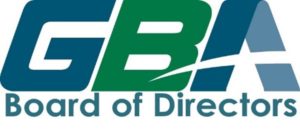GBA AWARDS RECIPIENTS
GBA is a volunteer organization. Almost all the resources we produce for our members, 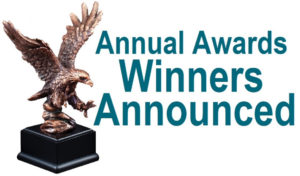 our contributions to the geoprofessional community, and our conferences are mostly driven by volunteer leaders.
our contributions to the geoprofessional community, and our conferences are mostly driven by volunteer leaders.
Each Spring, during our conference we recognize those that have contributed to GBA in a significant way. At our 2022 Spring Conference, awards were given to firms and individuals who exhibited extraordinary support and meritorious performance during our 2021-2022 fiscal year. Those recognized during the Annual Awards Ceremony were:
CERTIFICATES OF APPRECIATION
Each year we ask our Committees and Councils to provide us with the names of people that have contributed to our Association during the past year. Based on this list, we have more people contributing to GBA at a level higher than ever before.
Recipients of Certificates of Appreciation for 2021-2022
Victor Barchers, P.E.
Dave Cook, L.G., CPG 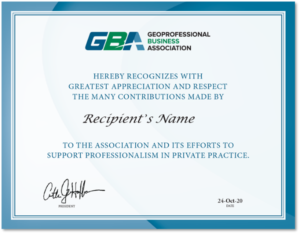
Blake Cotton, P.E., LEED AP
Pat Donovan, P.E.
Shawnna Erter, P.E., D.GE, F. ASCE
David Faulkner, P.E.
Kurt Fraese, L.G. F.GBA
Jeff Gebhard, P.E.
Daniel Gradishar, P.E.
Charlie Head, P.E., P.G., F.GBA
June Jewell, CPA
Jonathan Knudsen, P.E.
Michael Marasa, P.E.
Jay Martin, P.E., F.GBA
Mike McMeekin, P.E., ENV-SP
Bruce Miller, P.G.
Brad Nielsen, P.E.
Margaret Panatera, P.E.
Laura Register, P.E., LEED AP, F.GBA
Prashanth Vaddu, P.E.
Woody Vogt, P.E., D.GE, F.ASCE, F.ACI, F.ASTM, F.GBA
Travis Wambeke, P.E., P.G.
Steve Wendland, P.E., P.G., D.GE
AWARDS OF APPRECIATION
Special awards of appreciation were given to three volunteers who contributed to GBA 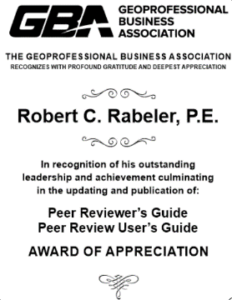 in extraordinary and unique ways during the year.
in extraordinary and unique ways during the year.
Those award winners were:
Robert C.Rabeler, P.E. (SME)
Bob Rabeler realized during the pandemic that something new and radical needed to be done to conduct Peer Reviews while we were working remotely and together with Terra Insurance Company found a way to deliver Peer Reviews remotely. He also volunteered to update two important documents for the Peer Review Process, the Peer Reviewer’s Guide and the Peer Review User’s Guide.
Grace Blackburn (Blackburn Consulting)
Gary DeJidas, P.E. (GAI Consultants)
Not long ago, our Peer Review Committee saw an opportunity 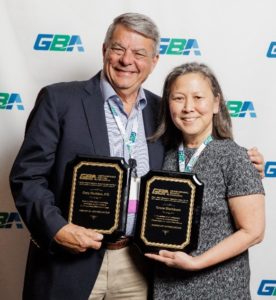 to create a new program where people with similar roles in member companies could come together in small groups to help each other, share best practices, and solve common problems. The same things we do throughout our association but in small groups for CEO’s, COO’s, CFO’s, and HR professionals. Imagine having a small group of like-minded people from different companies coming together regularly, with the help of a facilitator, to talk through common issues.
to create a new program where people with similar roles in member companies could come together in small groups to help each other, share best practices, and solve common problems. The same things we do throughout our association but in small groups for CEO’s, COO’s, CFO’s, and HR professionals. Imagine having a small group of like-minded people from different companies coming together regularly, with the help of a facilitator, to talk through common issues.
These two leaders saw how important one of our newest initiatives is and volunteered to facilitate Peer Groups. Both put time and energy into this effort and as a result, we have well-functioning Peer Groups and lots of happy members.
COMMITTEE LEADERSHIP 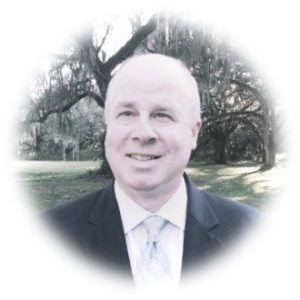
Daniel K. Schaefer, P.E. (Froehling & Robertson, Inc.)
Construction Materials and Testing Business Committee Chair 2017-2022
Steven K. Noble, P.E., PTOE (DOWL)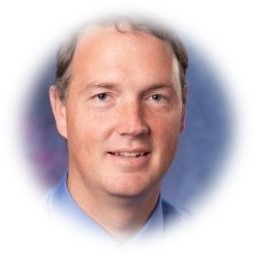
Business Practices Committee Chair 2020-2022
MEMBER FIRM ENGAGEMENT AWARDS
For several years, GBA has been tracking the engagement of member-firms through five measurements that we found to be most important indicators of the value members were receiving from membership.
Ultimately, engagement also indicates the value of membership to your employees which we feel is paramount to delivering our mission.
For the past four years, we presented awards to those firms who have the highest measured engagement in GBA during our fiscal year. We are proud to be able to recognize winners again this year. There are four award winners, one from each category based on firm size for Fiscal Year 2021-2022.
They are:
• Earth Engineering Consultants
• BSK Associates
• SME
• DOWL
Congratulations to all our FY 2021-2022 Engagement Award Winners
PROJECT AWARD OF EXCELLENCE
Leighton Consulting, Inc. – Gerald Desmond Bridge Replacement Project.  In 2020, the GBA Board of Directors identified an opportunity to celebrate greatness of our members as they use GBA’s best practices to manage risk and optimize performance on notable projects. This is the second year we presented the Project Award of Excellence to one of our member firms.
In 2020, the GBA Board of Directors identified an opportunity to celebrate greatness of our members as they use GBA’s best practices to manage risk and optimize performance on notable projects. This is the second year we presented the Project Award of Excellence to one of our member firms.
The second winner of GBA’s Project Award of Excellence is Leighton Consulting, Inc. Congratulations to Djan Chandra and the Leighton Consulting, Inc. team for their work on the Gerald Desmond Bridge Replacement project.
PRESIDENT’S AWARD
Saiid Behboodi, P.E., G.E. (PBS Engineering + Environment)
Each year, our current President selects one person to be recognized 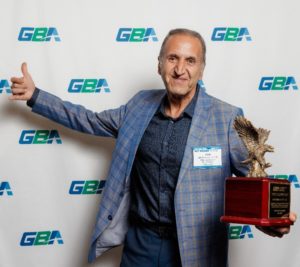 for the contributions they made to our Association during the year of his/her presidency.
for the contributions they made to our Association during the year of his/her presidency.
President, Tom Blackburn presented our 2021-2022 President’s Award to Saiid Behboodi in recognition of his many years of support and numerous contributions to GBA’s purpose and strategy through his enthusiastic ambassadorship, leadership and influence.
PRESIDENT’S GAVEL AWARD
Tom Blackburn, P.E., G.E., F.ASCE, F.ACEC (Blackburn Consulting)
During the awards ceremony, the Association recognized Mr. Blackburn for his years of service to the Board and for his leadership during his Presidency. Under Tom’s Presidency, GBA completed the 2024 Strategic Plan, increased communication with member firms, produced valuable 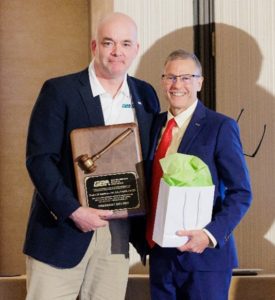 resources to benefit members, and increased engagement with alliance organizations in support of the Elevate Geoprofessional Value campaign.
resources to benefit members, and increased engagement with alliance organizations in support of the Elevate Geoprofessional Value campaign.
On behalf of the Board of Directors, all member firms, and Staff, we congratulate all the Award winners for Fiscal Year 2021-2022.
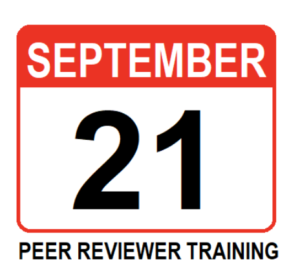 provides valuable feedback on your existing business practices so you can improve. It can help enhance the quality of your practice while simultaneously reducing your exposure to professional liability claims and losses.
provides valuable feedback on your existing business practices so you can improve. It can help enhance the quality of your practice while simultaneously reducing your exposure to professional liability claims and losses.
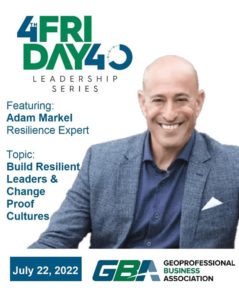
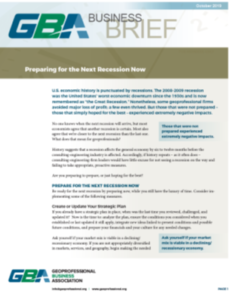
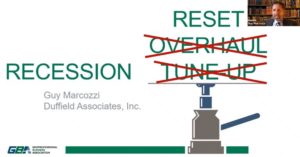 business season in a timely, responsible, and empathetic manner. During this presentation, Guy Marcozzi, P.E., LEED AP BD+C, F. ASCE (Verdantas) shares a tool kit for your business tune up which includes considerations in aligning your team and business practices and developing an emotional bank to draw from while making hard decisions. Make the appointment to tune up your business for a healthy recovery. (82 minutes)
business season in a timely, responsible, and empathetic manner. During this presentation, Guy Marcozzi, P.E., LEED AP BD+C, F. ASCE (Verdantas) shares a tool kit for your business tune up which includes considerations in aligning your team and business practices and developing an emotional bank to draw from while making hard decisions. Make the appointment to tune up your business for a healthy recovery. (82 minutes)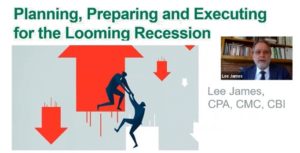 organization should this occur. Who should be the key people involved? Why is it important? How should this be completed? Lee James, CPA, CBI, CMC®, F.GBA (Lee James & Associates, Inc.) shares with you best practices and lessons learned from prior recessions; challenges and specifics to help you be better prepared; and the importance of being proactive in planning, preparing, and executing to best survive and thrive through a recession. Everyone will benefit from this presentation. (76 minutes)
organization should this occur. Who should be the key people involved? Why is it important? How should this be completed? Lee James, CPA, CBI, CMC®, F.GBA (Lee James & Associates, Inc.) shares with you best practices and lessons learned from prior recessions; challenges and specifics to help you be better prepared; and the importance of being proactive in planning, preparing, and executing to best survive and thrive through a recession. Everyone will benefit from this presentation. (76 minutes)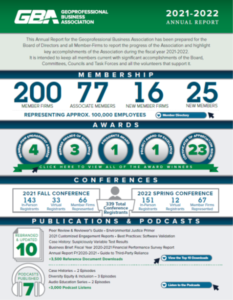
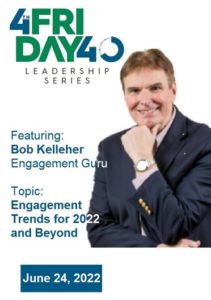
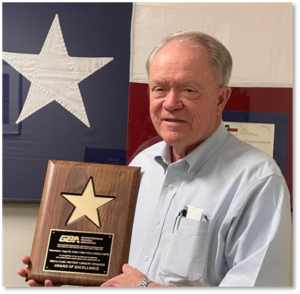 (Paradigm Consultants/CMT) passed away after complications associated with brain surgery that was performed in March.
(Paradigm Consultants/CMT) passed away after complications associated with brain surgery that was performed in March.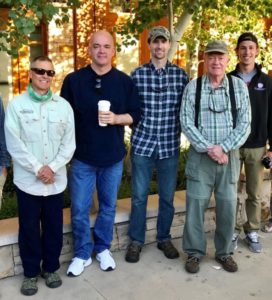 Diplomate of Academy of Geo-Professionals and a fellow of GBA, the American Society of Civil Engineers, ACI International, and ASTM International.
Diplomate of Academy of Geo-Professionals and a fellow of GBA, the American Society of Civil Engineers, ACI International, and ASTM International.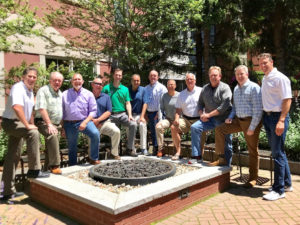 Mr. Vogt’s most significant contributions included: Moist-Curing Room Design, Construction and Maintenance; Best Practices: Do’s and Don’ts for Fact Witnesses; Case History 104: The Wrangler Turns Bandit. He was also a regular contributor at GBA Conferences. Likely his most significant contribution to GBA was his effort to refresh and update over 100 Case Histories in the GBA library, a task that took over 2-years to complete with the support of a team of dedicated reviewers.
Mr. Vogt’s most significant contributions included: Moist-Curing Room Design, Construction and Maintenance; Best Practices: Do’s and Don’ts for Fact Witnesses; Case History 104: The Wrangler Turns Bandit. He was also a regular contributor at GBA Conferences. Likely his most significant contribution to GBA was his effort to refresh and update over 100 Case Histories in the GBA library, a task that took over 2-years to complete with the support of a team of dedicated reviewers.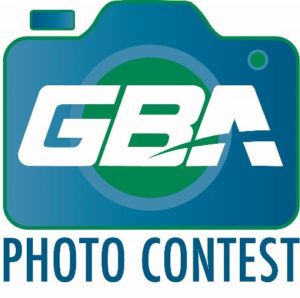

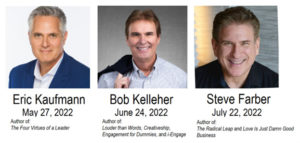
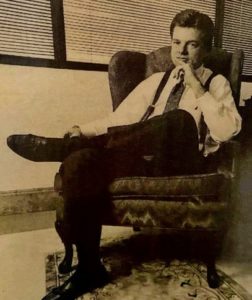 Ken was a significant contributor to our Association and served on the Board of Directors and as the President of ASFE in 1995-1996. He recognized the importance of mentorship.
Ken was a significant contributor to our Association and served on the Board of Directors and as the President of ASFE in 1995-1996. He recognized the importance of mentorship.
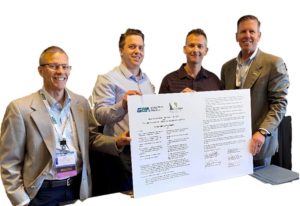 shared interests, the Geoprofessional Business Association (GBA) and the California Geotechnical Engineering Association (CalGeo) agree to formalize their relationship in advancing their mutual interests in confronting risk, optimizing performance, and promoting the value of the geoprofession, particularly on behalf of geotechnical and environmental engineers and engineering geologists through this Memorandum of Understanding (MOU).”
shared interests, the Geoprofessional Business Association (GBA) and the California Geotechnical Engineering Association (CalGeo) agree to formalize their relationship in advancing their mutual interests in confronting risk, optimizing performance, and promoting the value of the geoprofession, particularly on behalf of geotechnical and environmental engineers and engineering geologists through this Memorandum of Understanding (MOU).”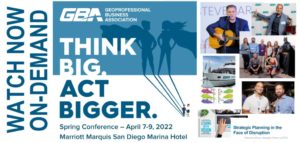 agreed that the keynote presentations were outstanding. Each was educational, entertaining, and inspiring. Now you can watch, listen to, and learn from these speakers too, on your own schedule.
agreed that the keynote presentations were outstanding. Each was educational, entertaining, and inspiring. Now you can watch, listen to, and learn from these speakers too, on your own schedule.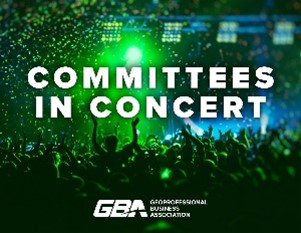 recent successes, share new goals for the coming year, and review opportunities for collaboration, all in an effort to best serve GBA and our members. Like an orchestra, GBA is an ensemble that produces the best results when the distinct groups work together. (40 minutes)
recent successes, share new goals for the coming year, and review opportunities for collaboration, all in an effort to best serve GBA and our members. Like an orchestra, GBA is an ensemble that produces the best results when the distinct groups work together. (40 minutes)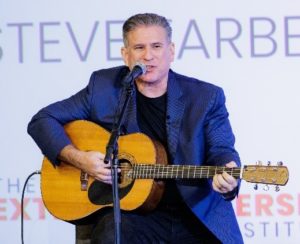 passion, determination, foresight, dedication, and fearlessness. In an encore performance for our THINK BIG, ACT BIGGER Conference, Steve Farber shows you how to use the LEAP framework – Love, Energy, Audacity and Proof to radically improve your organization and your life.
passion, determination, foresight, dedication, and fearlessness. In an encore performance for our THINK BIG, ACT BIGGER Conference, Steve Farber shows you how to use the LEAP framework – Love, Energy, Audacity and Proof to radically improve your organization and your life.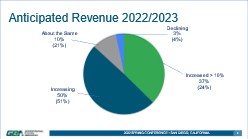 of the economy and assessment of the geoprofessional industry. During this brief presentation, Jason Stoops (G2 Consulting) shares the survey results so that you can assess how your firm and region is performing relative to others in the nation. (13 minutes)
of the economy and assessment of the geoprofessional industry. During this brief presentation, Jason Stoops (G2 Consulting) shares the survey results so that you can assess how your firm and region is performing relative to others in the nation. (13 minutes)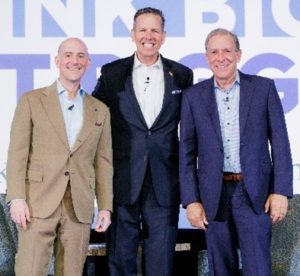
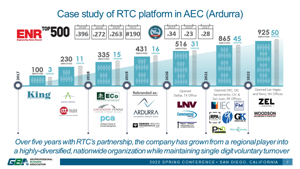 consulting engineering and science practices. This interest will only continue to grow due to the strong tailwinds around the space regarding the repair, modernization and construction of infrastructure and a renewed concern about the environment. Private equity firms are active acquirors across businesses of all sizes and can be an attractive option when it comes to ownership succession. During this session led by Christopher Lee (RTC Partners), learn why private equity has interest in consulting, engineering, and science practices. Understand how private equity can provide additional optionality in ownership succession. Explore staff growth opportunities through private equity capital infusion. (26minutes)
consulting engineering and science practices. This interest will only continue to grow due to the strong tailwinds around the space regarding the repair, modernization and construction of infrastructure and a renewed concern about the environment. Private equity firms are active acquirors across businesses of all sizes and can be an attractive option when it comes to ownership succession. During this session led by Christopher Lee (RTC Partners), learn why private equity has interest in consulting, engineering, and science practices. Understand how private equity can provide additional optionality in ownership succession. Explore staff growth opportunities through private equity capital infusion. (26minutes)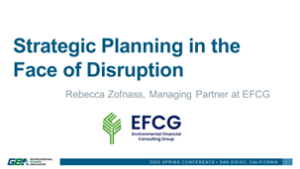 global pandemic with almost 50% of employees resigning and/or actively seeking new jobs. Employees are no longer human capital to be leveraged. They are key stakeholders in your business. They want their companies to have purpose, to have a soul, and they are not going to settle for anything less. The workplace and the workforce are shifting, and no amount of planning or stabilizing structure is going to stop it.
global pandemic with almost 50% of employees resigning and/or actively seeking new jobs. Employees are no longer human capital to be leveraged. They are key stakeholders in your business. They want their companies to have purpose, to have a soul, and they are not going to settle for anything less. The workplace and the workforce are shifting, and no amount of planning or stabilizing structure is going to stop it.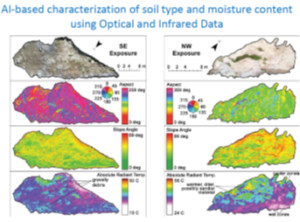 geoprofessional firms a chance to supplement and diversify their staff, improve performance, achieve efficiencies, and innovate. Geo-consulting firms can get more work done with fewer people. Many firms have opportunities for growth or market expansion but are limited by a shortage of geoprofessionals. New technologies and automation provide new options to mitigate that labor shortage. This presentation by Dimitrios Zekkos, Ph.D., P.E. (University of California at Berkeley) demonstrates how applications of technology and automation can achieve unprecedented efficiencies. Topics include Robots, UAVs, Artificial Intelligence, Satellites and use of Multi-Scale Frameworks to mitigate risk. (51 minutes)
geoprofessional firms a chance to supplement and diversify their staff, improve performance, achieve efficiencies, and innovate. Geo-consulting firms can get more work done with fewer people. Many firms have opportunities for growth or market expansion but are limited by a shortage of geoprofessionals. New technologies and automation provide new options to mitigate that labor shortage. This presentation by Dimitrios Zekkos, Ph.D., P.E. (University of California at Berkeley) demonstrates how applications of technology and automation can achieve unprecedented efficiencies. Topics include Robots, UAVs, Artificial Intelligence, Satellites and use of Multi-Scale Frameworks to mitigate risk. (51 minutes)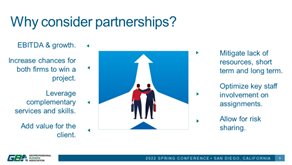 50% of something rather than nothing? Forging partnerships or consortiums with competitors to bid on larger projects and better execute the job has proven to be a winning approach for Martin LaRoche P.Eng (Kiewit) and François Santerre (Englobe). This presentation covers elements that can make a partnership or consortium with competitors a success. In addition, real situation examples are shared on some things not to do. Topics discussed include partnership / consortium opportunities and the criteria that make for a good fit; contractual agreements to adopt and why; terms between partner entities; scope split and selection of key resources; how to secure clients; project executive committee and its role; what happens if something goes wrong; and much more. (46 minutes)
50% of something rather than nothing? Forging partnerships or consortiums with competitors to bid on larger projects and better execute the job has proven to be a winning approach for Martin LaRoche P.Eng (Kiewit) and François Santerre (Englobe). This presentation covers elements that can make a partnership or consortium with competitors a success. In addition, real situation examples are shared on some things not to do. Topics discussed include partnership / consortium opportunities and the criteria that make for a good fit; contractual agreements to adopt and why; terms between partner entities; scope split and selection of key resources; how to secure clients; project executive committee and its role; what happens if something goes wrong; and much more. (46 minutes) our contributions to the geoprofessional community, and our conferences are mostly driven by volunteer leaders.
our contributions to the geoprofessional community, and our conferences are mostly driven by volunteer leaders.
 in extraordinary and unique ways during the year.
in extraordinary and unique ways during the year. to create a new program where people with similar roles in member companies could come together in small groups to help each other, share best practices, and solve common problems. The same things we do throughout our association but in small groups for CEO’s, COO’s, CFO’s, and HR professionals. Imagine having a small group of like-minded people from different companies coming together regularly, with the help of a facilitator, to talk through common issues.
to create a new program where people with similar roles in member companies could come together in small groups to help each other, share best practices, and solve common problems. The same things we do throughout our association but in small groups for CEO’s, COO’s, CFO’s, and HR professionals. Imagine having a small group of like-minded people from different companies coming together regularly, with the help of a facilitator, to talk through common issues.


 In 2020, the GBA Board of Directors identified an opportunity to celebrate greatness of our members as they use GBA’s best practices to manage risk and optimize performance on notable projects. This is the second year we presented the Project Award of Excellence to one of our member firms.
In 2020, the GBA Board of Directors identified an opportunity to celebrate greatness of our members as they use GBA’s best practices to manage risk and optimize performance on notable projects. This is the second year we presented the Project Award of Excellence to one of our member firms. for the contributions they made to our Association during the year of his/her presidency.
for the contributions they made to our Association during the year of his/her presidency. resources to benefit members, and increased engagement with alliance organizations in support of the Elevate Geoprofessional Value campaign.
resources to benefit members, and increased engagement with alliance organizations in support of the Elevate Geoprofessional Value campaign.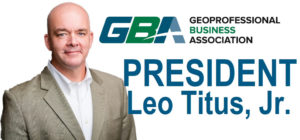 and chair the group’s board of directors.
and chair the group’s board of directors.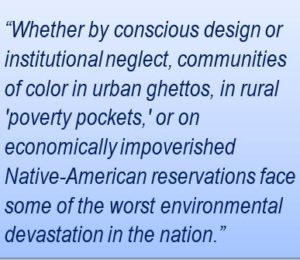 Environmental justice (EJ) involves the fair treatment and meaningful involvement of all people regardless of race, color, national origin, or income as it relates to development, implementation and enforcement of environmental laws, regulations, and policies. No group bears disproportionate share of negative environmental consequences. Groups and individuals have an opportunity to participate in decisions and voice community concerns as it relates to EJ.
Environmental justice (EJ) involves the fair treatment and meaningful involvement of all people regardless of race, color, national origin, or income as it relates to development, implementation and enforcement of environmental laws, regulations, and policies. No group bears disproportionate share of negative environmental consequences. Groups and individuals have an opportunity to participate in decisions and voice community concerns as it relates to EJ.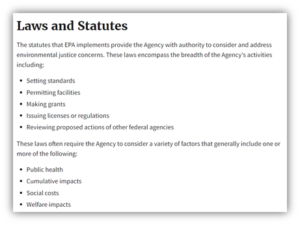 agencies recently made EJ a priority in future strategic planning. Specifically, Executive Order 12898 in 1994 started the EJ movement. EJ integration at the EPA has occurred with every regional and headquarter office having an EJ coordinator. The EJ coordinators have a suite of programs in specific areas of interest such as air quality, drinking water, hazardous waste sites, and lead.
agencies recently made EJ a priority in future strategic planning. Specifically, Executive Order 12898 in 1994 started the EJ movement. EJ integration at the EPA has occurred with every regional and headquarter office having an EJ coordinator. The EJ coordinators have a suite of programs in specific areas of interest such as air quality, drinking water, hazardous waste sites, and lead.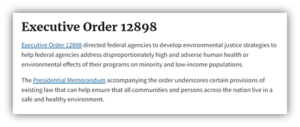 GBA firms provide assistance with permitting considerations during hearings, on submitted plans, and through various other outreach channels. With more focus on EJ, public outreach and community learning becomes a valuable input for regulatory agencies. Experience with managing EJ concerns in our projects can be a significant competitive advantage to GBA members
GBA firms provide assistance with permitting considerations during hearings, on submitted plans, and through various other outreach channels. With more focus on EJ, public outreach and community learning becomes a valuable input for regulatory agencies. Experience with managing EJ concerns in our projects can be a significant competitive advantage to GBA members